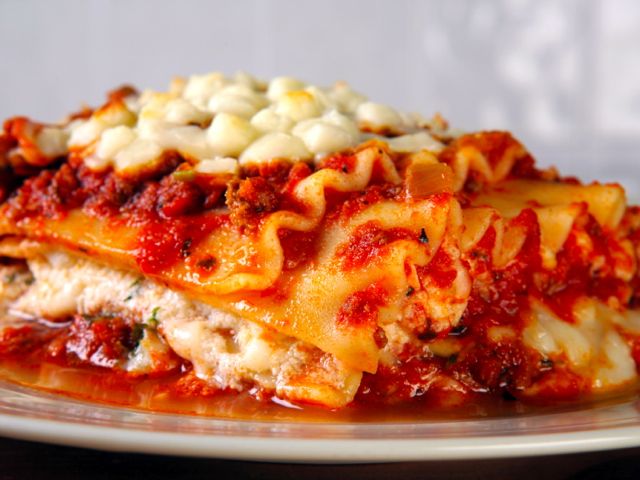
reference-image, l
(article, Laurie Whitman)
[%pageBreakSettings nobreak=true] My family has plain tastes; we are a meat-and-potatoes kind of brood. No haute cuisine here. It makes sense, I guess. My husband and I both grew up in lower-middle-class families (sometimes more lower than middle) and thrived on simple, hearty meals: starchy mashed potatoes, ground beef swimming in gravy, and the ubiquitous side of Del Monte green peas, which, as it whirred open, would invariably beckon a hopeful cat to the kitchen. [[block(sidebar). h1.Featured recipes]] When I was a new bride, at 19, I had not yet acquired recipes of my own and, quite truthfully, didn’t know much more than I had learned in Home Ec. I was eager to begin cooking for my husband, but having little experience, I began by mimicking basic meals from home. It took awhile. For the first month of our marriage, all I could manage was undercooked baked chicken, lumpy potatoes, and canned sweet corn. The first in a series of failed attempts is, to this day, referenced as “the pink-chicken scare.” My husband, Steve, was a good sport at first. Enthusiastically, he oohed and aahed over my creations, surreptitiously picking around the suspicious areas. Undaunted, I soon began experimenting with other recipes. Strangely, my creations — Slightly Crunchy Meatloaf, Dreadfully Dry Pork Chops, and Mushy Bloated Pasta — somehow failed to mirror the pictures in the magazines. Like many young brides, my early gastronomic exploits were not always successful ones. [%image reference-image float=right width=400 caption="The author's extended family loves her lasagna."] While I know it’s a terrible cliché, I blamed my mother — not just for my limited experience in cooking, but also for my limited repertoire. As a child, I took it for granted that our diet was normal. I never once questioned why we ate only Dad’s favorites, which usually involved something canned—— canned pork and beans, canned spaghetti, canned peas. In the absence of mashed potatoes, bread would do. It wasn’t until I ventured out to my friends’ homes that I discovered The Others. Other women prepared sumptuous meals with roast beef and prime rib, lasagna and stuffed shells, baked ham, and stuffed pork chops. Other families ate real Italian bread, not sliced Sunbeam. Other children ate frozen and — gasp — fresh vegetables. Warmed. I had a lot to learn. As my own family expanded, I continued to venture into the mysterious land of cookery, yearning to prove my culinary prowess. I studiously pored through my grandmother’s Fannie Farmer cookbook, took copious notes as television chefs created “simple but elegant” meals, and started experimenting with seasonings beyond my reliable salt and pepper. Some of my efforts were fruitful; others were undeniably disastrous. After years of frustration and a multitude of emergency take-out meals, however, I came to two realizations: One, I did not have the tenacity to become a great cook; and two, that was OK. The best meals are not necessarily those with complicated directions and long lists of ingredients. The best meals are those my family enjoys, whether it's a simple plate of spaghetti and meatballs or everyone’s favorite dessert: chocolate cream pie. Those are the meals that brought all five of us together in one place, for a brief slice of time. Those are the meals that caused my children, as their social lives expanded, to set aside their plans, because Mom was preparing one of their favorites. Those are the meals that my children will someday make for their own families. Today, I can produce a handful of dishes of which I am proud, and at least one — lasagna — that even my extended family routinely requests. True, I still rely on Ragù rather than homemade sauce (or “gravy,” as my Italian friends would call it), but I consider it a triumph. While my creations are simple by some people’s standards, my grown children still squeal in delight when I prepare their childhood favorites. Similarly, I have never fully relinquished the comfort foods of my childhood. On a cold winter’s day, I pay tribute to Dad’s favorites: French-Canadian pea soup and a thickly buttered bread, or ground beef smothered in brown gravy. At the holidays, I yearn for Mom’s meat pie with dollops of ketchup, and I imagine her in my kitchen, sharing a crumbling slice with me, instead of hundreds of miles away at her retirement home. While some mothers might bake cookies or cake as a special treat, I prepare thick chocolate cream pies, recalling how my parents loved Cool Whip (while I, like my grandmother, insist on whisking real cream from the carton). All of these foods bind me to my past and, more importantly, to my family. As I watch my children grow and prepare to go out on their own, I imagine them in their own homes someday, preparing dinner for their brood. Like me, my son and daughters may not be natural-born cooks; nonetheless, I hope they fearlessly experiment to find the foods their families love. And I hope that, as they prepare these meals, they think of me and embrace what I have learned: to create food that we love, for those we love. I guess I really do know how to cook, after all. p(bio). Laurie Whitman is a writer based in Rhode Island.

reference-image, l